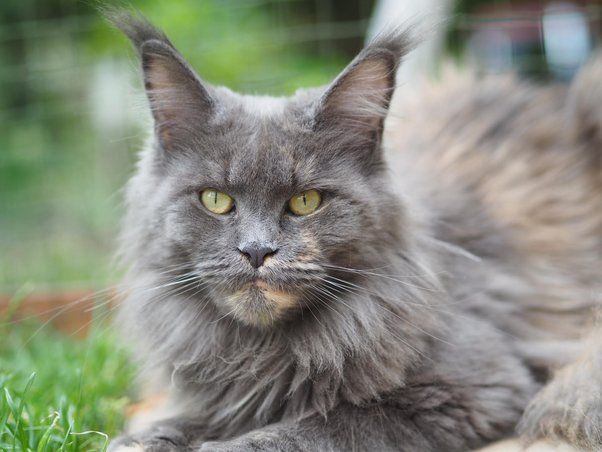Several cat breeds have a lynx-like appearance due to their pointed ears, tufted cheeks, and short tails. The most common domestic cats that resemble wild lynxes include the Maine Coon, Norwegian Forest Cat, Siberian, and Bengal. While they may look similar, these cat breeds have distinct personalities and care requirements. Understanding the characteristics of each can help determine which lynx-lookalike best suits your lifestyle.
Maine Coon
The Maine Coon is one of the largest domesticated cat breeds, known for its rugged appearance and luxurious, shaggy coat. Originally bred as a working farm cat in Maine, the Maine Coon developed several lynx-like traits that aided its survival in harsh winters.
Some key features that give the Maine Coon its lynx-like look include:
– Pointed, tufted ears – The large, wide-set ears have furry tips that resemble the tufts on a lynx’s ears.
– Long cheek ruff – Fluffy cheek fur frames the face.
– Shaggy neck ruff – A thick, furry ruff extends down the neck.
– Short tail – The tail is short, only about 1/3 the length of the body.
– Tufted paws – Long fur grows between toes and extends beyond the paws.
– Coat pattern – Common tabby coat patterns evoke a lynx’s spots.
While majestic in appearance, the Maine Coon has a gentle personality. This breed tends to be playful, loyal and enjoys human companionship. They make excellent family pets with proper care and grooming.
| Maine Coon Facts |
|---|
| Average Size: 10-16 lbs for females, 15-25 lbs for males |
| Coat Length: Medium-long |
| Grooming Needs: Daily brushing to control shedding |
| Activity Level: Moderately active |
Norwegian Forest Cat
The Norwegian Forest Cat, or Wegie, is a large, fluffy breed hailing from Scandinavia. Like the Maine Coon, the Norwegian developed a thick, cold-resistant coat and lynx-like features that aided its survival in harsh climates. Distinctive traits include:
– Pointed ears with lynx-like tufts
– Long, shaggy coat with a wooly underlayer
– Full ruff and britches (long fur on hind legs)
– Large paws with tufted toes
– Long, bushy tail
While formidable in appearance, Wegies have gentle personalities. They tend to be relaxed, loyal and enjoy human interaction. The Norwegian Forest Cat thrives as an indoor/outdoor pet with access to space to roam and climb. Their long coat requires regular grooming to prevent matting.
| Norwegian Forest Cat Facts |
|---|
| Average Size: 12-16 lbs |
| Coat Length: Long, dense undercoat with longer guard hairs |
| Grooming: Weekly brushing required |
| Activity Level: Moderately active |
Siberian
The Siberian cat originated in Russia, where a triple coat protected it from Siberia’s frigid climate. The breed’s coat color patterns and facial features evoke a wild lynx. Distinctive traits include:
– Medium-sized pointed ears with tufts
– Long, dense coat with lush underlayer
– Distinctive leg britches and toe tufts
– Colorpoint, tabby and agouti coat patterns
– Intense eyes with colors like green, gold and copper
Despite its fierce looks, the Siberian has a gentle, affectionate personality. They form strong bonds with their humans. Siberians remain playful into adulthood and get along well with children and other pets. Their long coat requires weekly brushing.
| Siberian Facts |
|---|
| Average Size: 10-17 lbs |
| Coat Length: Medium-long triple coat |
| Grooming: Weekly brushing suggested |
| Activity Level: Active and playful |
Bengal
The Bengal cat was developed by crossing wild Asian leopard cats with domestic shorthairs. The breed’s exotic spotted coat closely resembles a lynx. Distinctive Bengal features include:
– Medium-sized ears with wide bases and light fur tufts
– Thick, lush, spotted or marbled coat
– Muscular build with elongated spots that resemble rosettes
– Long legs and a thick tail with black tip
– Green, gold or hazel eyes with an intense gaze
Compared to other lynx-lookalike breeds, Bengals tend to be more active and require more stimulation. They are intelligent, curious and athletically-inclined. Bengals thrive when provided with tall cat trees, toys and interactive playtime. Early socialization helps ensure they have a friendly temperament.
| Bengal Facts |
|---|
| Average Size: 8-15 lbs |
| Coat Length: Short to medium length |
| Grooming: Weekly brushing recommended |
| Activity Level: Very active |
Personality Considerations
When choosing a cat breed, it’s important to look beyond physical appearance and consider your lifestyle and personality match. Key differences between lynx-lookalike breeds include:
Activity Level: Bengals and Siberians tend to be more energetic and playful. Maine Coons and Norwegians are moderately active.
Grooming Needs: Long-haired breeds like Main Coons and Norwegians require daily brushing to control shedding and prevent matting. Short-haired Bengals require less frequent grooming.
Vocalization: Siberians are known to be quite vocal. Maine Coons have soft chirps. Bengals are usually less vocal.
Temperament: Most of these breeds bond strongly and enjoy human interaction. Bengals can be more aloof with strangers. Early socialization is key.
Ideal Home: Busy households are best suited for energetic Bengals and Siberians. Maine Coons and Norwegian Forest Cats adapt readily to different lifestyles.
Consider activity levels, grooming needs, vocal tendencies, and your desired relationship with the cat when deciding which lynx-like breed best fits your home.
Conclusion
With their alert ears, fluffy fur, and wildcat patterns, Maine Coon, Norwegian Forest Cat, Siberian, and Bengal breeds resemble lynxes in the feline world. But each has unique care needs and personality traits. Active households may favor lively Bengals or Siberians, while those seeking a devoted, low-maintenance pet may prefer the gentle Maine Coon or Norwegian Forest Cat. Beyond their lynx-like looks, take lifestyle match into account when choosing your ideal cat companion.


